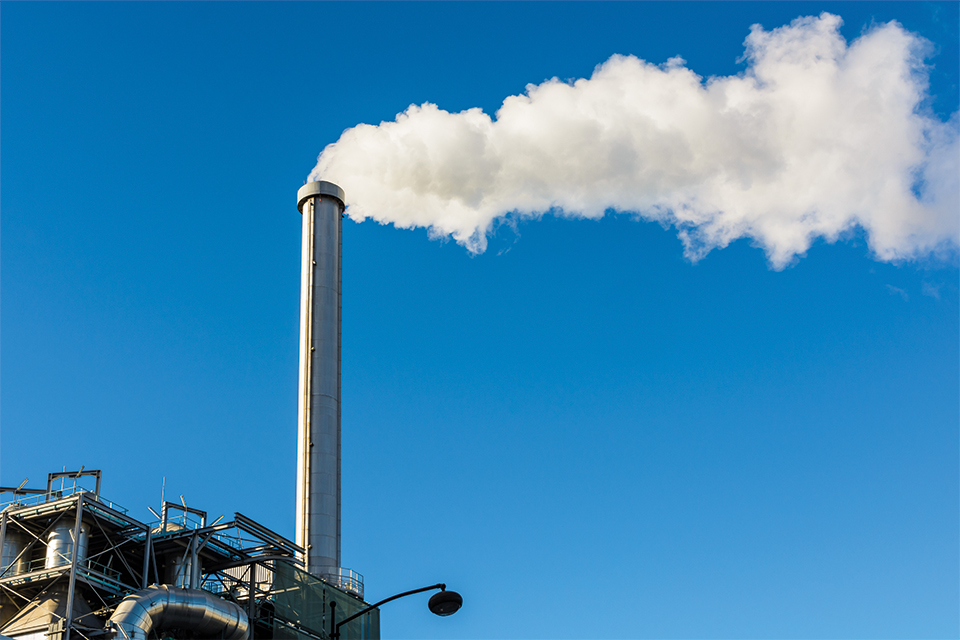2023-08-04
Emissions Monitoring through Long-term Sampling

Emissions monitoring is often carried out by continuously operating instruments providing measurement results in close-to real time. The data can then be averaged and compared to emission limits. Using this kind of instruments is not only a possibility but often a legislative requirement.
This is often the case for many of the “usual suspects” such as NOX, SO2, CO, NH3, HCl, and dust, and for supporting parameters such as flow, temperature, and pressure.
Continuous Monitoring vs. Sampling
However, there are situations where continuous, real-time monitoring is not required. An example of this is when the pollutant levels are expected to be steady and/or low, and the legislators have ruled that it is sufficient to verify this only with certain intervals. Then short-term, long-interval sampling may be applied.
Here, “sampling” means that a stream of flue gas is led through a filter or a sorbent material inside a container, leading to accumulation of pollutants of interest. After a prescribed sampling period, perhaps as short an hour or so, the container is removed from the stream and its content of pollutants (the sample) can be analysed. As a trade-off between ability to catch deviations from the expected and operating costs, the interval between samplings can often be in the range of months or even a year.
Short-term Sampling
An example where this type of short-term, long-interval sampling is applied is the monitoring of emissions of certain metals such as As, Cd, Co, and Cr from waste incineration facilities within the European Union. Three samples are to be taken for at least 30 minutes each – the “short term”. It is enough to do this once every six months – the “long interval”. Each sample is collected on a filter, and the metal content accumulated on the filter is typically determined at a laboratory by means of X-ray fluorescence (XRF).
With this said, it must be noted that “sampling” also can have other meanings in emissions monitoring contexts. Specifically, it may also refer to the method by which a small fraction of the flue gas is continuously extracted and lead to gas analysis instruments. The flue gas is “sampled” but no “sample” is created and preserved. Instead, emissions data is provided continuously.
Long-term Sampling
So far so good, but what if the concentration of a pollutant varies notably over time, but there are no instruments available to measure the concentration continuously, in real time? Short-term, long-interval sampling would not do as the results probably would not be representative for the actual emissions. Short-term, short-interval sampling would do the job, but the costs and other practical aspects makes it a less attractive approach.
What then remains is long-term sampling, with equally long intervals between the sample analyses. Special attention must then be paid to the sampling rate, where the sampling speed at the nozzle should be the same as the speed of the surrounding flue gas. This is called isokinetic sampling.
Sample Analysis
After the sampling period, the sorbent container is sent to a laboratory for analysis. Here, the total weight of the pollutant accumulated in the sorbent can be determined. Dividing this weight by the total sample volume passing the sorbent container during the sampling period yields a pollutant concentration. Thanks to the isokinetic sampling, this concentration is also equal to the pollutant concentration in the sampled flue gas, averaged over the sampling period.
The long-term sampling effectively becomes continuous by inserting a new sorbent container in the sample flow just after the exposed one is removed. Subsequent results from the sample analyses then give a continuous series of concentration data, although with very low time resolution.
A Long-term Sampling Example
An example where long-term sampling is applied can be found in European Union regulations on waste incineration. Dioxins and furans (to be more precise “polychlorinated dibenzo-p-dioxins and -furans, PCDDs/PCDFs”) can result from incineration of plastics and hazardous waste. These substances are very toxic and bad for the environment also in very low concentrations, and the emissions should therefore be monitored. Further, the concentrations in the flue gas can vary widely depending on fuel composition and incineration temperature, so continuous or semi-continuous monitoring may be required.
There are no viable real-time measurement methods available at the sought-after levels, so long-term sampling is prescribed. The sampling time is two to four weeks. Sample analyses are then carried out at laboratories using GC-MS (gas chromatography-mass spectrometry) instruments. The long sampling time allows accumulation of low-concentration dioxins and furans to match the detection ability of the GC-MS instruments. Sampling is to be repeated at least once every month.
OPSIS DX100
OPSIS offers a long-term sampler for PCDDs/PCDFs named DX100, meeting the EN 1948 standards for sampling required under the EU Industrial Emissions Directive. Please contact OPSIS or its representatives for more information on the DX100.
